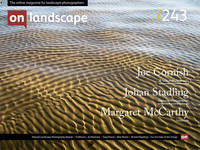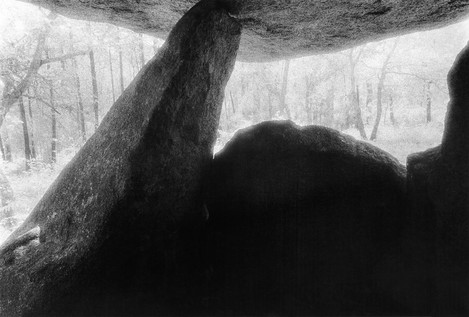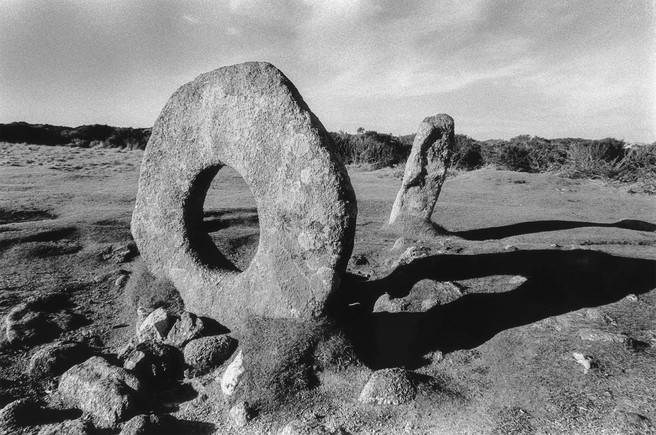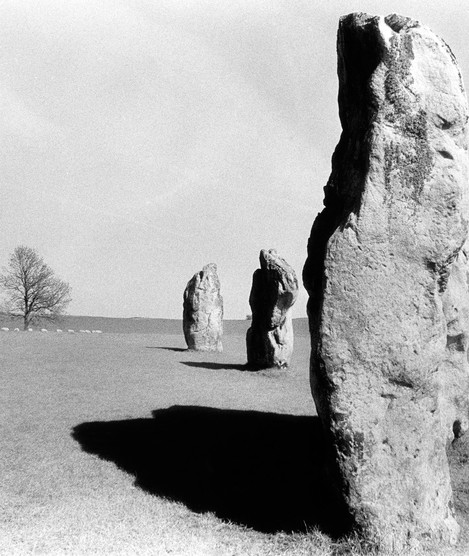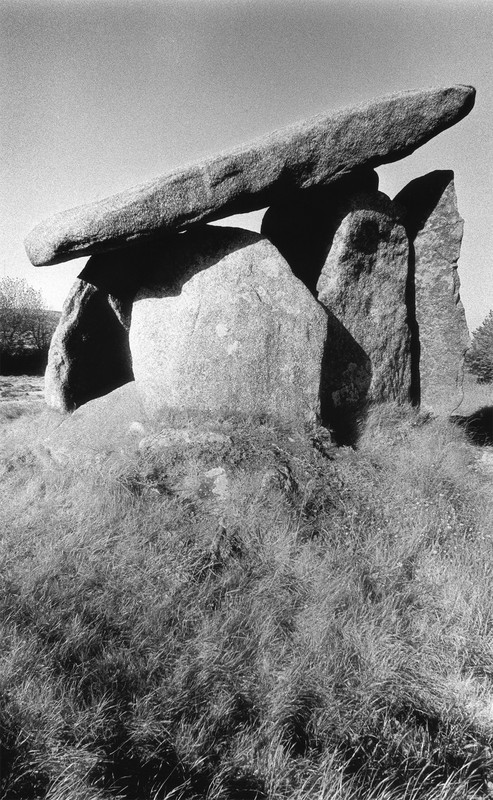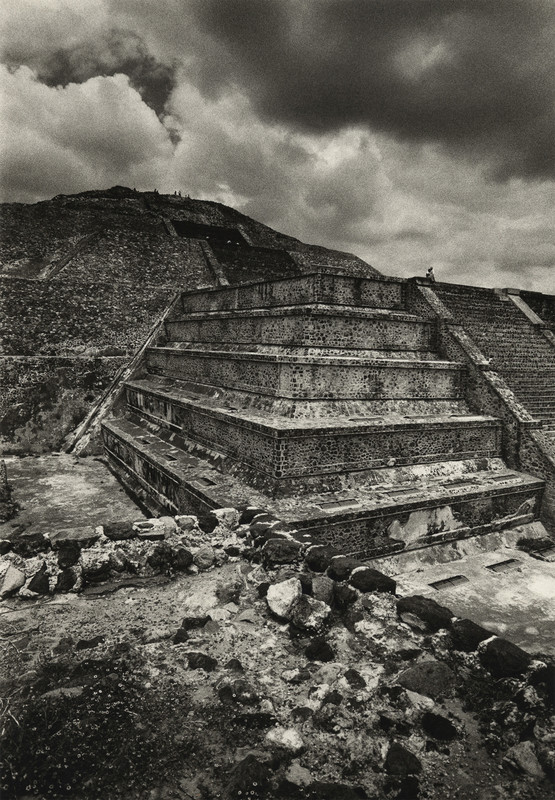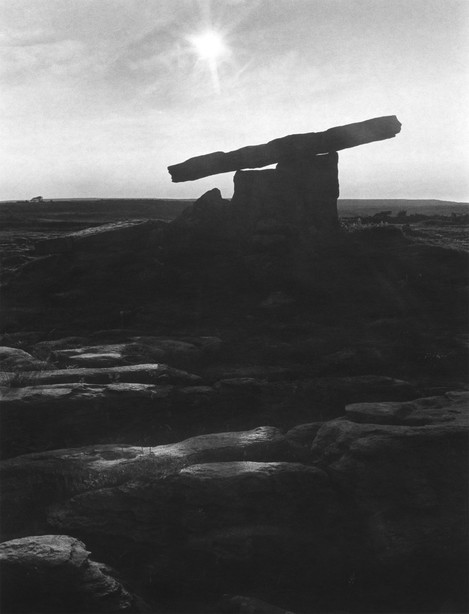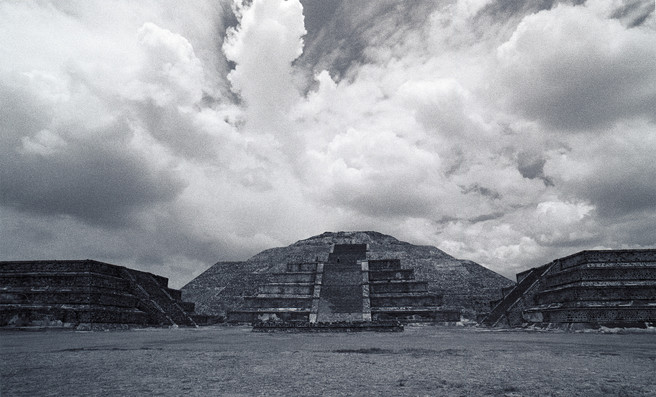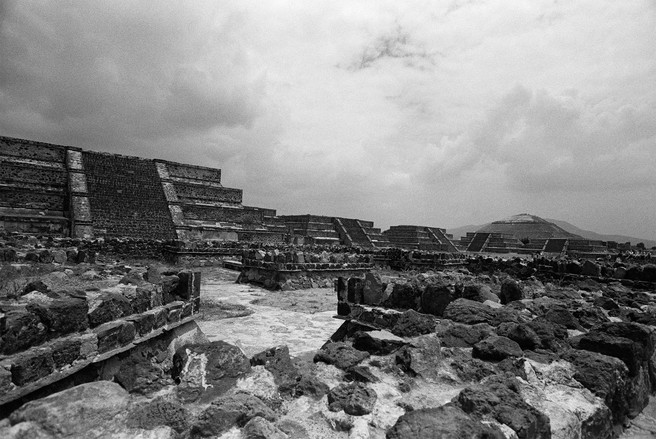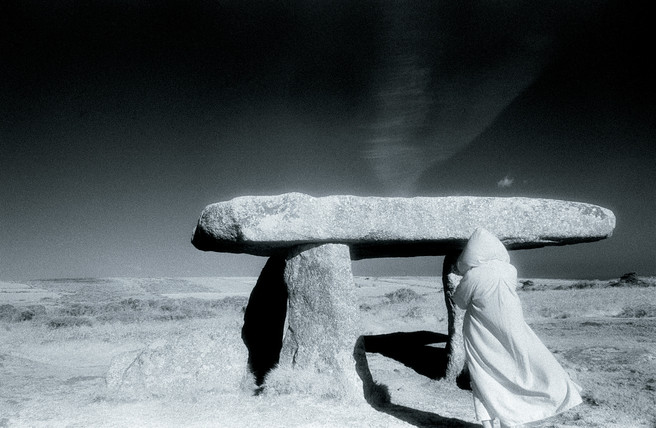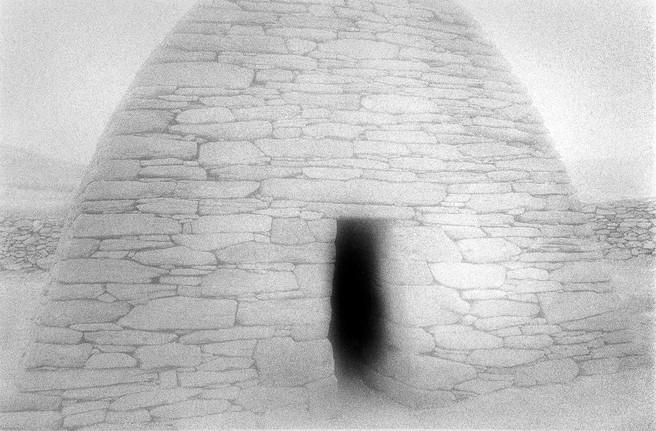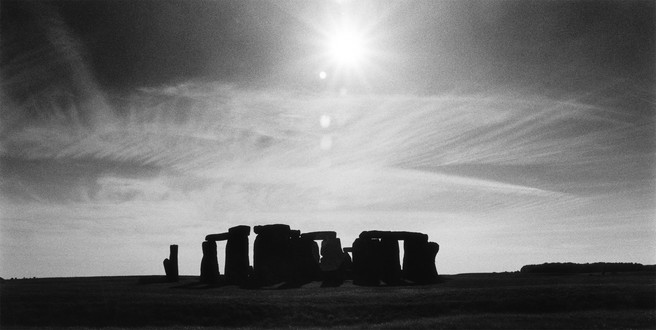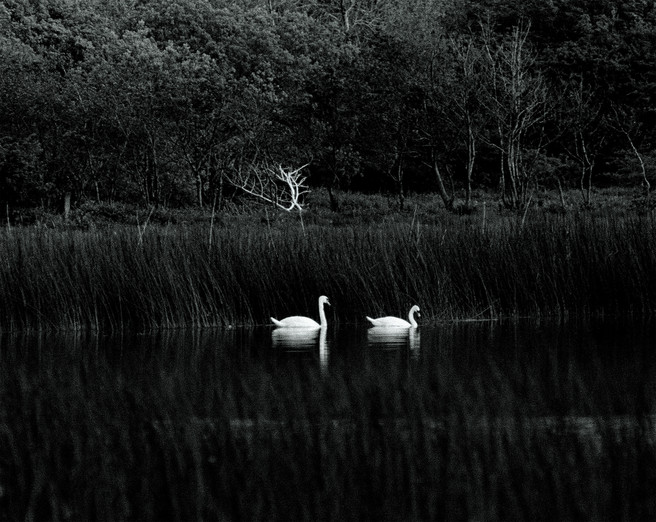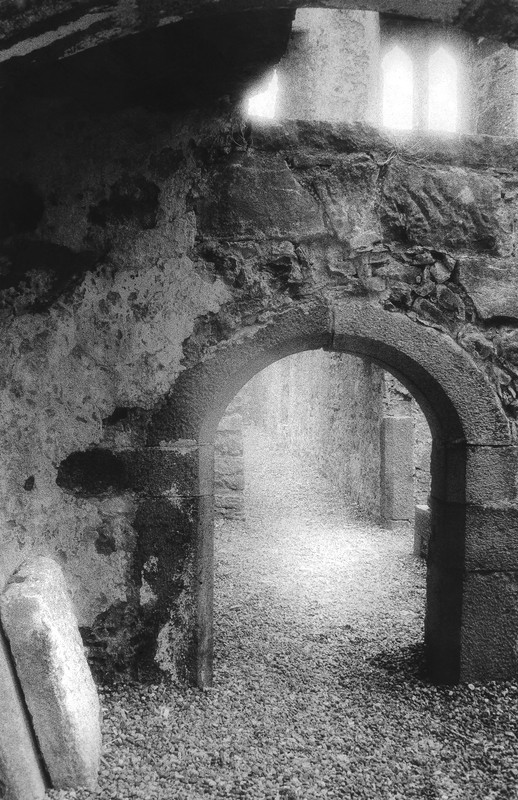Photo Tanka Meditations

Margaret McCarthy
Margaret McCarthy’s work is driven by a sense of wonder at the fecund creativity of the natural world. While our culture seems determined to manipulate and control the natural world, her photographs address our soul’s yearning for a way back to balance with it.
McCarthy photographs the landscapes of antiquity with an immediate, intuitive reaction to the “genius loci” — the spirit(s) — of a specific place. Inspired and indebted to mythology, she brings the eye of a poet to her photography, exploring archetypes of myth and dream.
Recent Honors: American Society of Media Photographers BEST OF ASMP 2020; 2020’s 14th JULIA MARGARET CAMERON AWARD for Women Photographers and the ALL ABOUT PHOTO AWARDS 2020. She has been named among the “Best of the Best Emerging Fine Art Photographers” by BW GALLERIST Magazine. Her extensive list of exhibitions include: the Fogg Art Museum, The Griffin Museum of Photography, the Overseas Press Club and The Hudson River Museum, as well as numerous galleries, universities and public exhibition spaces. Her “Divine Feminine” series is part of the Kinsey Institute Art Collection.

Gabriel Rosenstock
Gabriel Rosenstock is a bilingual poet (in Irish & English), tankaist, haikuist, translator, essayist, playwright, novelist and short story writer. A Lineage Holder of Celtic Buddhism, he is the author of HAIKU ENLIGHTENMENT, and the author/translator of over 180 books.
Rosenstock has been awarded the Tamgha-i-Khidmat medal (Pakistan) for services to literature and is a long-standing member of Aosdána (The Irish Academy of Arts & Letters). He is a former Chairman of Poetry Ireland. A title of his was chosen as one of the Books That Changed Us by MOLI, Museum of Literature Ireland.
Photo: Jim Berkeley

Charlotte Parkin
Head of Marketing & Sub Editor for On Landscape. Dabble in digital photography, open water swimmer, cooking buff & yogi.
There are few people who move from an established art form to photography. The contemporary art world tends to have a distrust of photography and yet there are some intriguing works that seem to break through the often prejudiced barriers that lie between seemingly opposing worlds. Margaret's work and its pairing with haiku/tank poetry brings a different expectation from the audience. Like many artists who work with photography, the narrative that exists around the work is often important and investment in understanding it often improves one's appreciation. We talked to Margaret about how she got involved in photography and why she works as she does.
Background
What sparked your passion for photography? Was photography part of your childhood or education?
I didn’t choose photography – it chose me! I was a fine art student at the School of Visual Arts, doing welded sculptures – huge sheets of diamond plate steel – pieces that took ages to finish. SVA added the requirement of one photo course in order to graduate. I was REALLY upset -- I really couldn’t afford a camera – but somehow, I did. I fell in love with the immediacy of photography. It could keep up with me -- and how fast I thought and saw things.
My first trip to Ireland made me a landscape photographer. It was the mobility of light and weather, how that gives you completely different photographs just seconds apart. I love how weather changes the light, how they interact.
from my prehistoric heart
from my petrified existence
greetings to You
embrace me with Your lighta shearc
óm' chroí réamhstairiúil
ó shaol seo na gcloch
mo bheannacht ort
beir barróg orm led' ghilese
Tell us about what draws you to landscape photography? Did you have a connection with the landscape when growing up?
I grew up in the working-class section of a small town; we had a backyard. I liked to sit under my grandmother’s hydrangea tree. It felt pure. It felt special.
I keep coming back to the idea of Genus loci – the special spirit of a place – that’s what I’m there to discover with my camera.
At the megalithic standing stones of Ireland, Cornwall, England and Galicia, Spain, I felt a connection; I discovered my love of ancient landscapes. Later residencies in the American South at Georgia’s Hambidge Center and The Virginia Center for the Creative Arts allowed me bask in the natural world in ways not possible in a city. I became close to particular trees, groves or waterfalls. My landscapes are always a sort of love poem to place, attempting to capture that genus loci or spirit of a place.
As a culture, we seemed determined to manipulate and control the natural world, yet our souls seem to long for a way back to balance with it. My work is about that yeaning.
Who influenced you most in your photography and art? What books stimulated your interest in photography?
I’m fascinated by our changing ideas of what a “beautiful” landscape is. The critic Estelle Jussim – her book “Landscape As Photograph” was important to me. She talks about how landscapes we now consider beautiful – Niagara Falls, for instance – were considered monstrous by the first visitors who saw them.
Oddly enough, I only discovered Julia Margaret Cameron after I’d been photographing awhile. I had already posed my sisters as Celtic heroines, so when I saw her work, I immediately felt a kindred spirit. I relate to the playfulness, the joyfulness of Jacque Henri Lartigue; the obsessiveness of Eadweard Muybridge; the way Robert Frank revised our understanding of America and what an American landscape could be; I’ve always liked the way Duane Michaels uses image & text together.
It would be fair to say I’m more influenced by music and poetry. I listen to a lot of music – all kinds. I read a lot of poetry.
Musicians/ Composers
I’m inspired by John Lennon - “Get it out, get it down, put a backbeat to it”, he said. Meaning: trust your creative impulse and finish things. I need to hear Mozart for sheer graciousness of spirit – for absolute transcendence.
Poets
Walt Whitman - the original big, generous, expansive, colloquial voice of the American Spirit. Shakespeare – for the sheer power of how his language penetrates human psychology.
Very important: Early Irish nature poetry; Bardic poetry; “Amergin’s Invocation” is a touchstone for me.
A Childhood Influence
The Catholic Mass, in Latin - gave me my sense of ritual, drama and myth, which I now realise marks all my work. I’m not a fan of organised religion, but the church gave me a willingness to see things that aren’t visible – to imagine.
days when men knew
what it was: the Mên-an-Tol
i shall tell You now
the secret must be oursa shearc ní thuigtear níos mó an bhrí
atá leis an Mên-an-Tol
neosfaidh mé anois duit é
bíodh sé ina rún daingean
You say on your website that you “bring the eye of a poet to her photography, exploring archetypes of myth and dream in her imagery.” Tell us more about the part mythology plays in your photographic work
From the get-go, right after acquiring that first camera, I began posing my family and friends as characters from the Celtic myths I was reading. My sisters and female friends were especially patient with me, as I turned them into Celtic heroines. As I read mythology, I was always drawn to the female characters – they were and continue to be a special source of inspiration for me. )
I believe my landscapes are about Gaia – the living, breathing body of our earth – the spirit of the divine feminine. All about reclaiming The Goddess.
Every day, I see “the hero’s journey” being made by the average person struggling through everyday life. In the heroes and heroines of myth, I’ve always seen the struggles of the average human being.
THE GOLDEN BOUGH by Sir James Frazer was an important book for me. His point: Our wildly divergent world cultures share a universality in the themes of their myths and folklore – a kind of proof of our collective unconscious.
“McCarthy has been drawn to the landscapes of antiquity throughout her photographic travels. She photographs with an immediate, intuitive reaction to the “genius loci” -- the spirit(s) -- of a specific place.” What does the idea of “genius loci” mean to you and how does this affect your photography?
Avebury has an energy; it’s different from the energy of Stonehenge. The capped dolmens -- each seems to have its own energy. As did my grandmother’s hydrangea tree!
I’m always surprised by what actually happens on a location or site while photographing, particularly on the sites of standing stones. I’ve had clouds form a lemniscate (infinity sign) above a dolmen; a child wander into my shot at Mên-an-Tol and crawl through “the stone of the hole”; random, unexpected, magical moments. But isn’t that why we photograph?
I try to stay in the moment. That can be hard – to put aside your expectations as you’re photographing, of what you think you “should” be getting. The older I get, the more my definition of genius becomes “stay out of your own way”.
earth speaks to us
what appears and disappears
all things speak to us
come close, belovèd, speak to melabhrann an fhirmimint linn
labhrann an talamh
labhrann gach a nochtann
is nach bhfuil ann níos mó
chugam aniar thú – labhair liom
You mention that your work includes working with different methods such as black & white and infra-red film, using images in sequences, and collage. How do you decide which methods to use for which project? Does the visual idea come first or does this develop as you use a certain media or presentation?
I have long loved black and white infra-red film and used it as one of my standard films for years. Infra-red records a part of the spectrum not visible to the eye -- for me, the infra-red image conveys the hidden dimension and unseen energy of a place.)
In my “Divine Feminine” series, wanting to get beyond the single image, I began placing images in sequence, which allowed me to capture the motifs and scope of a story. In a way, those pieces are self-made myths. Collage further allowed me to go beyond the single image.
Visual idea or media/presentation first? It’s a two way street -- It can work both ways. I find projects develop in an organic way; a visual idea - or a creative prompt -- will tell you what it needs. Or you realise you’re consistently drawn to a particular subject; or working with a particular media or material. Consistency of media and presentation can be the thread that gives continuity to a body of work. Ultimately, you need a vision for what the project is – what holds it together and makes it work.
You have won various awards over the past few years: American Society of Media Photographers BEST OF ASMP 2020; 2020’s 14th JULIA MARGARET CAMERON AWARD for Women Photographers and the ALL ABOUT PHOTO AWARDS 2020. You’ve also been named among the “Best of the Best Emerging Fine Art Photographers” by BW GALLERIST Magazine. What would you say has been the biggest benefit in engaging with competitions/awards such as these?
In the best sense, it’s about connecting with your photography community, and putting your work in front of the people in that community whom you respect. It’s always nice to be noticed, to have your work recognised. But that shouldn’t be the reason you pick up the camera or make a photograph. As the creator, you’re the final judge on what you’ve made. I try to be thoughtful about where and why I’m sending my work to a particular place. But once it’s out the door, I rarely think about it.
belovèd, i heard Your voice
speaking to me in words
our ancestors spoke
i awoke – saw everything clearlytrí shuan gan taibhreamh
a chuid, chuala mé do ghlór
ag labhairt liom i bhfriotal
ár n-aithreacha romhainn
dhúisíos – bhí gach rud soiléir
no abandoned monument
not known to us now
let's seek the undiscovered
belovèd, within ourselvesníl aon ní fágtha
leacht tréigthe ar bith, a chuid
nach bhfuil eolas air
níl teacht ar an ní aineoil
ach ionainn féin, a thaisce
Over the years you have had many exhibitions. What have been your highlights of these?
The “Firsts” are milestones and thus stand out as highlights:
Throckmorton Fine Art showing some of my photographs at AIPAD: The Photography Show in 2019;
My first exhibition showing large digitally made prints – THE DIVINE FEMININE at Soho Photo Gallery. The technology was new, I was able to create prints on a scale not possible in my darkroom. Digitising my images allowed me to visualise my subjects large-scale, and print accordingly.
My very first one-person show -- photographs of the Irish Landscape at The Overseas Press Club. Putting that show together helped me realise my vision and identity as a landscape photographer.
I’m currently part of a great community of artists in Long Island City, NY; the exhibition spaces are exciting. Artists will often generate exhibition themes and curate shows around what they’re passionate about. Open studios and pop-up shows are starting up again as we re-emerge from covid. There’s a lot of energy there. It’s exciting because so much of it is artist driven.
Tell us more about the printing and framing of the images for exhibitions. E.g. paper, size, etc.
I’ll usually make digital work prints in my studio starting with standard photo-mat paper; from there I get a sense of what the final paper and size of the exhibition print should be.)
On larger prints (over 20”) I collaborate with printmakers I trust. As you can imagine, the cost of framing and shipping larger works is a major consideration.
I began in photography shooting film and loved the darkroom, the magic of the darkroom. My vintage gelatin silver prints are not necessarily meant to be compared with digital materials. They’re made on papers no longer available. Simply put, they are from a different world.
Today, I love digital processes for the creative freedom and expansion they give my photographic practice. I have options of paper, surface and texture, and control of how images can be sized and placed in a grouping that traditional photographic printing didn’t allow.
an ancestral voice – though mute
is the heart's longing
to connect with ancient roots
running through us all like veinsan dúil sin sa ghlór
glór ár sinsir – cé balbh
sé dúil an chroí é
teacht arís ar fhréamhacha
'ritheann trínn 'na bhféitheacha
Can you give readers an insight into your workflow - which cameras and lenses you like to use, and how you approach post-processing, editing and sequencing?
Over the years, I’ve used a variety of cameras, from large format (4x5) to Wide lux panorama cameras to 35mm Nikons.
I currently use a Nikon D7500 with several different Nikon lenses; I also use a Nikon D200 that has been converted and dedicated for black and white infra-red. I go out with both cameras, prepared to shoot colour, black and white or both.
When just walking around the city, I have a SONY RX 100 VII camera in my handbag. I’ve also been known to use my I-phone; recently, I’ve used it to shoot video.
Once downloaded, captioning and keywording images becomes increasingly important; I’ll also then do a quick “eyeball” edit, starring images I like. I’ll go back later to delete or rank images. I can then create virtual “albums” of my final selections & sequencing.
Beloved: The Project
Tell us more about the new book BELOVÈD that you are working on with Irish poet and translator Gabriel Rosenstock.
One of my initial trips to Ireland was on a photo workshop led by the photographer Ron Rosenstock (not related to Gabriel). Ron had collaborated with Gabriel on their extraordinary book, THE INVISIBLE LIGHT – Ron’s photographs with Gabriel’s haiku. They are a magical combination.
In June of 2020, during the height of covid, as I worked on organising my archive, it occurred to me to email Gabriel; he suggested I send a few black and white landscapes. I sent three images the following week. He replied with three tanka poems – those are the first three pairings in the project, which became BELOVED:)
I believe this project really does contribute to our cultural conversation as we process all the emotions experienced during Covid and as we currently ease into re-emergence.
Our current crisis has caused us all to re-examine our core values: the preciousness of our human relationships, our interconnectedness, and our relationship to our planet. Given the events of the past year, the project speaks to readers in a timely, heartfelt manner now. Each photo-tanka pairing becomes a meditation asking: Who and what do we hold dear? Who and what are we devoted to?
the Pyramid of the Moon
when i reached the top
i climbed and climbed forever
when will You show me Your facedhreapas, a thaisce
dhreapas Pirimid na Ré
thuas ar an mbarr dom
leanas orm ag dreapadh
cathain a nochtfar do ghnúis
is where You are, belovèd
where the gods will die
some say they're yet to be born
we've only known their shadowáit na ndéithe, a chuid
is ann duitse san áit sin
áit a gcaillfear iad
deirtear nár rugadh fós iad
nach bhfacamar ach a scáil
The project is structured into pairs of black & white landscape photographs of standing stone structures with short tanka poems that Gabriel was inspired to write for them. Did you foresee this method of working or did it emerge from playing with ideas?
Gabriel wrote each 5 line tanka in spontaneous response to each photograph.)
Central to Gabriel’s method is immediacy; each poem is his immediate response to that particular photograph, just as my photographs are my immediate/intuitive response to that particular location.
In his book HAIKU ENLIGHTENMENT Gabriel speaks of the poem owing “its impact and inspiration to a meditative flash… the moment merges suddenly with perceived phenomena.” So it’s writing as a kind of spiritual practice, embracing that tradition.
Retrospectively mining your archive for a project such as this must have been quite interesting. Was it a collaborative process with Gabriel talking about the images and which worked best or did you pick a portfolio to present to him??
After the initial three images and tanka, I would select and send Gabriel three (occasionally four) images each week, which he would return to me with tanka. Maybe I naturally think in triptychs, but seeing three photographs with tanka each week became a good working method.
How long did it take from conception to completion?
About a year. We began the email collaboration in June 2020; by April 2021 we had 55 images paired with tanka poems, and I began a preliminary book layout.
the world erupts, belovèd
and nothing is still
all is flux – Heraclitus
let's listen to the ancientsar chualaís glóraíl
tá an domhan ar tí pléascadh
níl aon ní socair
panta rhei – Heraclitus
tugaimis cluas do na sean
You mention as the project developed, a theme emerged: the human search for the beloved as seen through landscapes that cross space, time and history. Was this a new idea or one you had already considered and once you had recognised this theme, did it change the way you finished the project?
The theme became apparent as I saw the poems -- the word “beloved” created a consistent theme throughout the tanka. Of course, its meaning became more poignant as Covid unfolded all around us, all over the world. Ultimately, we’re all being asked: what is it that we truly value?)
So, BELOVED: PHOTO-TANKA MEDITATIONS became a project about crossing boundaries, both geographic and linguistic. It weaves a story through world cultural history in an accessible way, from a personal point of view. It illuminates a universal human story.
As people yearn to travel again, I hope these pairings of word and image bring these ancient landscapes to life in an accessible way for general interest readers. The project lends itself to being a “field guide” to these historic, iconic sites, presenting them in a unique, deeply personal way.
The initial images I sent Gabriel were standing stones from the Celtic world – Ireland; Cornwall, England; Galicia, Spain. As the theme became apparent, it seemed natural to expand the selection to other archaeological sites I had photographed. Pompeii, Italy; the temples of Greece; the Central American Pyramids of Mexico. So, the theme definitely changed the way we finished the project.
You are an accomplished writer as well, with your poetry collections. How do you feel your poetry affects your work? Do you consider a poetic narrative when creating or editing your pictures?
While a working photographer, I had the separate task of sending out my poetry for publication. I had long been intrigued by the possibilities of combining these two passions - photography and poetry. The interplay between image and text creates a third thing - something more than the sum of its parts. In 2012, I began my web publication A VISION AND A VERSE, a seasonal broadside designed for the web, combining my imagery and my verse. It began as a way of sharing a page out of my creative journal. Each issue became my personal, ongoing exploration of the interplay or fusion between word and image. I always begin with a photograph that can stand on its own, and a poem that can stand on its own. What emerges from the synergy between the two?
Broadsides were once handed out on street corners – so the broadside format seemed natural for me. These “e-broadsides” extend the traditional form to our current electronic street corner – the web. (You can check it out or subscribe for free at www.avisionandaverse.com)
In terms of editing photographs: I think all photographers are telling a story of some kind. Editing is about telling that story. With images, I may be using a more poetic narrative as I did with The Divine Feminine Series – which I see as little self-made myths/stories. Or a photo broadside sets up an interplay between image and word. But it still comes down to story-telling.
Tell me what your favourite two or three photographs from the project are and a little bit about them.
Lanyon Quoit, The Giant’s Table, Cornwall
as a living sacrifice
to the Great Unknown
fill this emptiness, we pray
with the breath of Your presenceofrálaimid duit
ina n-íobairt bheo bheathach
gach dán is amhrán
líon an folús seo anois
impímid ort, le d'anáil
My friend and travelling companion wearing our ever-present rain-cape, which, somehow, turned her into a druid.
Gallarus Oratory, Ireland
for a thousand years
or more, belovèd
rain coming in from the sea
in gentle syllablestá sé ag cur báistí
le míle bliain
nó níos mó, a chumann
fearthainn ón bhfarraige
ina siollaí caoine
It’s said that early Christian monks meditated here; I can well imagine them recognising the landscape as sacred here.
Stonehenge
all gone their separate ways
some found wealth and fame
others found obscurity
and one or two found themselvesseanchompánaigh
imithe bealaí éagsúla
maoin rompu nó cáil
a thuilleadh 'mhair san iargúil
corrdhuine d'aimsigh é féin
Well, because it’s Stonehenge!
Pyramids of the Sun and Moon, Teotihuacan, Mexico – climbing those steps creates a kind of bond with the ancient landscape. That process of climbing towards those powerful skies.
Swans at Dromore Woods, Ireland – simply a magical moment when they appeared and sailed by.
You’re currently exploring different media to present the project – perhaps a book or a multi-media experience. Can you tell us more about what you’re exploring and your vision for the project?
Multi-media lends itself to combining the visual and verbal; Gabriel is especially big on multi-media, having recorded his poems and paired them with visuals in short videos and films. Believing that native languages are store-houses of wisdom, multi-media also lends itself well to his bi-lingual poems - performed in both languages, they have a musical quality.
On Landscape creating video content for your subscribers recognises that viewers are open to more immersive, multi-media experiences.
Tanka (like the sonnet) originally meant 'a little song’. We’ve considered having the tanka spoken, chanted or sung, or possibly accompanied by musical instruments.
Having said all that, I have always loved the physicality of books. The book is a physical, tactile object. I see readings, performances, festivals or on-line multi-media outlets supporting, opening up new avenues for the book.
People read or watch in different ways and places now; we’re eager to reach new audiences on new platforms.
say it aloud! now say it
softly in Your heart
once mixed, who can separate
milk from water, belovèdparamahansa
abair os ard é, a chuid
os íseal id’ chroí
má mheasctar bainne is uisce
cé dhealódh óna chéile iad
among the moss-covered skulls
of defeated Gaels
belovèd, what place is this
the Franciscans are long gonecaoirigh is eallach
is caonach ar bhlaoscanna
na nGael bocht cloíte
cén áit é seo, a thaisce
tá na Proinsiasaigh ar lár
What is next for you? Where do you see your photography going in terms of subject and style?
In many ways, this is an open moment. We’re all still figuring out what’s next. In many ways, the whole world is still on pause. This pause was unbidden and unprecedented. It gave the Earth a brief chance to catch her breath -- and us a chance to contemplate how we can better preserve the wonderful gifts we’ve been given.
Creating work in different media – some visual, some verbal -- has been a hard road at times. Eventually, I realised all my work came from the same creative source. I’m hoping that new projects will provide ways to unify my talents and creative impulses. I recently found this quote from Twyla Tharp:
“Unity. I hope for unity for myself in my endeavours. I hope for unity for this country, for unity globally. UNITY.”
When I read that, I thought: YES!

